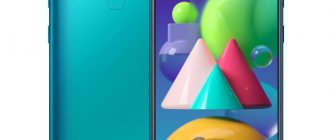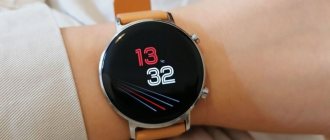Heavy smartphone users depend on a relic of the past called the power outlet. Usually we remove the phone from charging in the morning, go to work, put the phone on charge again, finish work, remove the phone from charging, go home, use the smartphone and put it on charge again at night. In other words, as soon as a socket appears in our field of vision, the smartphone does not connect.
Battery characteristics
The battery is the main source of electrical energy for a smartphone. The battery is characterized by the following parameters:
- Type. The most common are nickel-cadmium, lithium-ion, nickel-metal hydride and lithium-polymer. Modern smartphones increasingly use lithium-ion batteries.
- Capacity. Thanks to this indicator, it becomes known how much electricity the battery produces over a certain time. It is measured in miles-amp-hours. The higher this indicator, the longer the gadget will not require recharging.
- Manufacturer. It is best to choose a battery produced by the phone manufacturer, although there are cheaper options. Saving can lead to damage to the device.
Dependence of capacity on charge consumption
In addition to the fact that the duration of the device depends on the capacity of the battery, there is another important indicator. You can call it the degree of optimization of phone systems.
Let's give a clear example that will show that battery capacity should not be overestimated when characterizing phones. Let's say the iPhone 6 model has a battery of approximately 1900 mAh. For comparison: devices from Chinese manufacturers running Android have batteries with a capacity of 2500 mAh. However, in practice, it may turn out that the Apple product will work longer. The reason is that it is optimized an order of magnitude better: the smartphone does not heat up, it is based on a single closed-source operating system that simply “flies” while working with the device. The same cannot be said about Chinese mobile phones, which, having a huge battery, heat up like an iron; hang and constantly slow down.
Compatible Phone Batteries
When it is not possible to purchase an original telephone battery, it makes sense to pay attention to compatible models. The most popular models are those produced by the brands Craftmann, Wave and KVANTA. Among the devices there are models with increased capacity, the dimensions of which are the same as those of the originals. Thanks to them, it is quite possible to increase the capacity by 200 - 300 mAh.
Checking the battery condition
To determine the condition of your phone battery, you need to inspect it. With a lithium battery, problems will be immediately noticeable. They often swell and the contacts become covered with corrosion and white and greenish spots.
Important! If a change in the shape of the battery is detected, its use should be stopped immediately. Otherwise, an electrolyte leak may occur, which will short-circuit the device's microcircuits.
The phone should not discharge very quickly. If previously the charge lasted for three days, but now only one with the same use, this is a reason to pay attention to the condition of the battery.
It is also possible for the battery to lose charge. For example, the screen shows that there is 25% charge left, and after one call it suddenly turns off. To save yourself from such situations, you can use portable batteries.
To check the status, you can use special programs:
- iOS. iPhone owners can use the iBackupBot utility. It is installed on the computer to which the smartphone is connected. After starting the program, a device is selected from the list and information is obtained about the capacity value and the number of charge-discharge cycles completed. If the capacity is 50% less than nominal, the battery needs to be replaced.
- Android. To obtain information, you can use the request *#*#4636#*#*. After this, information about the battery status will be displayed on the screen. In addition, you can use the Battery program, which will tell you about the current state.
Signs of battery failure
The first thing that makes people think about how to check the battery capacity of a phone on Android or iOS is the rapid discharge of the device. With the same load and time of use, the gadget stops working and does not turn on again. In addition, the smartphone may turn off, although the scale shows that the battery has not yet completely drained.
Most often this happens when the charge is below 20%.
Please note: some solve this problem using a powerbank, which will allow you to charge the phone at any time, but the problem will not go away. If the breakdown is left unattended, sooner or later the phone will fail and will not turn on until the battery is replaced.
Another sign of a battery failure is its rapid heating while using one of the applications. Sometimes the battery gets hot even if the gadget is locked. In the future, this can cause serious malfunctions in the operation of the device and subsequent repairs.
If a bump appears on the battery, it means that it is swollen and is “living out” its last days. If the phone continues to work, this gradually affects the rest of its components. To solve the problem, you will have to replace the battery. This often happens with cheap Chinese smartphone models.
Why does the battery drain?
For what reasons does it happen that, after about a year of use, the smartphone begins to work slower and quickly loses charge? There are several reasons for this, partly they are solved by software, partly by technical means.
Your phone may drain quickly due to:
- Increased load. Most modern smartphones use the Android operating system. It is complex and open source, which is why malfunctions occur. There are dozens of programs running in the background that are completely unnecessary.
- Viruses. Hackers create a lot of malicious programs designed to hack operating systems. Even devices with powerful batteries and processors lose performance due to viruses. Malicious software can be identified by the appearance of intrusive advertising, rising body temperature, and system sluggishness.
- Defective battery. The battery may fail after two years of operation; this process is inevitable. The rated capacity decreases when the cathode and anode become dirty.
Visual inspection
The vast majority of battery problems are easy to spot with the naked eye. One of the warning signs is a noticeably accelerated battery discharge: a sudden loss of more than two percent of the charge, sudden shutdowns or complete discharge within a few hours of being in standby mode. If there are no power-intensive applications on the phone, and no virus software has entered it, the power supply will undoubtedly fail soon.
To check the battery on your smartphone, you can also resort to simple manipulations:
- Turn off the device, remove the battery and carefully inspect it for white or greenish spots, signs of corrosion near the metal contacts and various bends. If you notice at least one suspicious sign, you should immediately contact the device manufacturer (if the smartphone is still under warranty) or purchase a new battery.
- Place the battery removed from the phone on a flat surface and try to unscrew it. If the battery rotates easily, this is a clear symptom of imminent failure, since a working power source must fit tightly to the surface. This quality check is called a rotation test.
Under no circumstances should a problem battery be placed back into the device to prevent electrolyte from spilling inside the device. A power supply that has become unusable must be disposed of.
Restoring the battery
If you wish, you can start restoring the battery. This measure will be temporary and after some time you will have to buy a new component. Restoration should be carried out by those who have at least a little understanding of this; for everyone else, it’s better to go straight to the store.
From another battery
In this case, preparation will be required:
- Any other 9V battery.
- Electrical tape.
- A simple thin wire.
To restore capacity, we perform the following work:
- We connect the wires to the contacts of the battery that requires resuscitation.
Important! Pay attention to the poles; if you connect plus and minus with one wire, a short circuit will occur.
- We secure the contacts with electrical tape and mark them with a marker at “-” and “+”.
- We connect the wires to the “donor” and secure it with electrical tape.
- When the battery warms up, you need to disconnect it and insert it into the smartphone.
- After turning on the device, check the charge level and begin standard charging.
With a fan
You need to prepare:
- Power supply with an output voltage of at least 12 V;
- The wire.
We proceed according to the following algorithm:
- We connect the negative connector of the fan and the corresponding connector on the device.
- We repeat the operation with the positive connector.
- We fix the wires on the battery.
- We turn on the power supply, and the fan will begin to rotate, which confirms the flow of current.
To obtain the required capacity, 30 seconds are enough, after which charging can be carried out in the usual way.
With the help of cold
This option does not give a 100% result, but in some cases it works. To do this, the battery is placed in a polyethylene bag to avoid moisture. In this case, you cannot use paper or foil. For resuscitation, the spare part is placed in the freezer for twelve hours. Then you need to take it out, warm it to room temperature and wipe it dry.
If bloating appears
Due to swelling, the battery cannot be used, but can be saved. To do this, perform the following sequence of actions:
- We find a cap under the sensor board.
- We pierce the cap with a nail or needle.
Important! When performing this operation, you must act very carefully: the upper part on which the board is located is separated from the case.
- After the accumulated gas has escaped from the housing, the metal plate is installed back.
- Apply waterproof glue to the puncture site.
Mechanical ways to check the battery
Battery life depends not only on how often the phone is used. The device is adversely affected by prolonged downtime and sudden temperature changes. For example, quite often the charge can completely disappear if a person leaves the apartment on the street, where it is currently −10 °C, and holds the gadget in his hands. In this case, the phone will no longer turn on.
As for battery swelling, it is not easy to determine this at the initial stage, since it happens gradually.
To notice the breakdown, you need to place the smartphone on a flat surface with the back cover down and try to unscrew it. If this succeeds, it is better to immediately replace the battery.
Myths about phone batteries
There are many myths that have been destroyed. Let's look at some of them:
- Overnight charging causes the battery to deteriorate. Modern batteries practically do not overheat and even if a loss of charging capacity occurs, it will be very insignificant.
- Shutting down apps will help your battery last longer. Modern devices are designed to multitask. If the application is terminated, all its data is deleted from RAM. As a result, a new start will consume more energy than running in the background.
- You can only use original chargers. In reality, charging is now standardized, the only difference will be a slightly longer charging time.
- The smartphone needs to be completely discharged before charging. In reality, this is not the case. This requirement was relevant for nickel-metal hydride and nickel-cadmium batteries; modern devices do not need this.
The most "hardy"
If we take into account the entire smartphone market as a whole, then the leaders in terms of capacity are generally other companies. Maybe they're just using the high battery capacity number as a marketing ploy, or maybe these phones actually last longer.
So, the rating is as follows: the most “capacious” is the Highscreen Boost 2 SE smartphone with a 6000 mAh battery. Behind it comes the Philips Xenium W6610, which can please the user with a 5300 mAh battery, then comes the Sigma ThL 5000 (device battery capacity is 5000 mAh), followed by the X-treme (model PQ22) – a 4500 mAh battery. Next are the less durable Prestigio MultiPhone 5503 DUO (4000 mAh) and Fly IQ4502 Era Energy 1 Quad - 4000 mAh. We will not continue, since those models that are on the list below are not of particular interest within the framework of this article.
As you can see, there are a lot of phones that surpass the iPhone and Samsung Galaxy in terms of battery capacity. Whether there is a need for such large batteries is a moot point. But such devices are definitely in demand.
How to extend the life of your phone battery
Regardless of what type of battery your smartphone has, there are several recommendations for extending its service life. There is nothing complicated about them:
- The battery must be kept in a cool place and should not be stored in the sun or near heating elements;
- Due to a complete discharge, the battery wears out more, so it should not be allowed to occur;
- If you plan to run powerful applications and games on your phone, you should choose a model with a large battery capacity;
- For charging, you should use original chargers; if you use a high-power adapter, do not charge the device more than 80 percent.
Getting current Android battery capacity in the AccuBattery app
There are several applications available on the Play Store for analyzing battery capacity, but the most popular and accurate (on the Internet you can find comparisons of the results obtained in the program and using hardware capacity meters) is AccuBattery, available for free (there is also a Pro version, but for our purpose it not required).
You can download AccuBattery from the official Play Store: https://play.google.com/store/apps/details?id=com.digibites.accubattery. After installing and launching AccuBattery, information about the battery capacity at the moment cannot be immediately obtained: this is due to the way the application is “forced” to count it and adjust it before the numbers become close to actual ones. General procedure in the context of the topic under consideration:
- After launching the application and several welcome screens with information about its capabilities, on the “Charging” tab, check whether the application has correctly determined the “Design Capacity” (aka “name capacity”) of your battery. If not, click Set Design Capacity and set the correct number.
- You can find out the capacity of the factory battery from the phone's characteristics on the Internet or using another third-party application: AIDA64 very accurately displays the rated capacity for smartphones of popular brands (AccuBattery may be wrong in this aspect).
- After the first launch, the “Calculated capacity” item (exactly what interests us) will be empty. Our task is to be patient and use the phone. What should be taken into account is discussed below, after the steps under consideration.
- After the first charging of your Android phone, in the “Calculated capacity” item, data on the capacity in mAh (mAh), calculated at the current time, will appear. In the future, as tracking continues, this data will be adjusted and become more accurate.
- Also, as you use it (not from the first day), the “Battery Capacity” graph at the bottom of the “Health” tab in AccuBattery will begin to fill.
That's pretty much it: if you want more accurate data about your Android phone's battery capacity, let the app collect the information for a week or two. The following nuances should be taken into account:
- Once you install the app, it defaults to prompting you to stop charging when the charge reaches 80% (this can have a positive effect on your overall battery life).
- At the same time, most users try not to completely discharge the battery, as they know that this harms Li-Ion/Li-Pol batteries.
- The first two points (charging not completely and after only a partial discharge) lead to the fact that the calculated capacity data is less accurate.
How to deal with this is up to you. I recommend charging your phone to 100% and discharging it to 20-30% for a week; the data will be relatively accurate and the process will be gentle on the battery.











